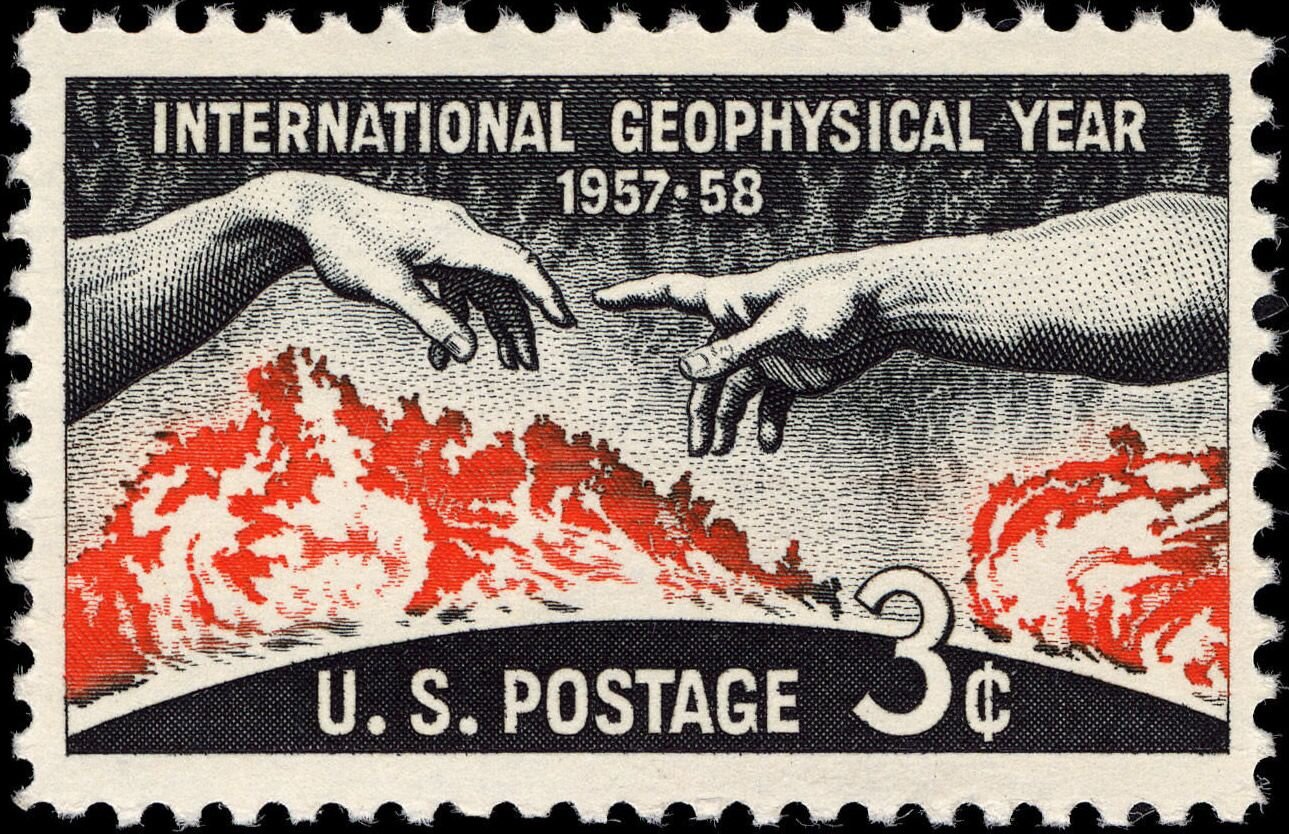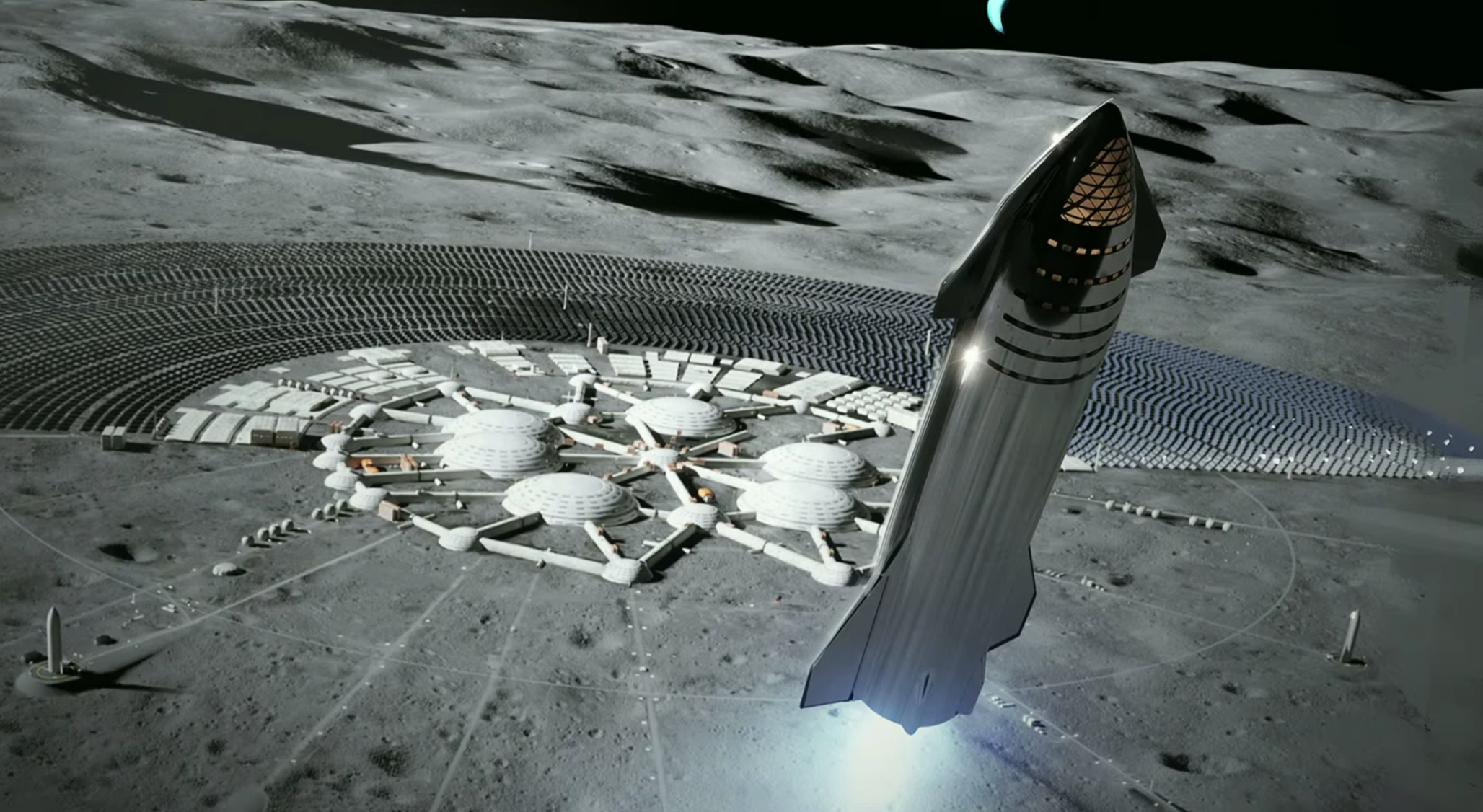Final Frontier Capitalism
How capitalism in the cosmos threatens humanity’s hopeful future among the stars.
If you follow the news out of the technology industry, the future of humanity’s space-exploits appears to be caught somewhere between the competing ambitions of a small collection of billionaires. Whether its Branson’s luxury space-tourism, Musk’s martian colonies, or Bezos’ deep-space habitats, there is a single common thread between these disparate projects: they are based on their capacity to generate profits. The claim from these billionaires is that the profit motive and their mutual competition will drive down costs while promoting efficiency and innovation.
Similarly, when people think of the most impressive advancements in space-faring technology, the competition and rivalry of the ‘Space Race’ might be the first thing that comes to mind. Conventional wisdom tells that fierce nationalism and strategic manoeuvring motivated the US and USSR to achieve incredible advancements in engineering in a matter of decades. With each side jealously guarding their engineering and scientific innovations, the ‘Space Race’ tells a story that is reflexively capitalist and rooted in ‘free-market’ ideology.
The problem with this narrative is that it isn’t concerned with the real history of space technology. The conflict inherent in the ‘Space Race’ ignores the collective achievements and founding principles of the space agencies and scientists that have driven space development. If we centre their efforts and intentions in our historical understanding of humanity’s space exploits, we can continue to build international political and social infrastructure that uses space to benefit all of humanity. On the other hand, if we continue to let the visions of capital and billionaires dictate the future, we cede the immense potential of space to corporate enclosure, private profits and militarisation.
Space Law Provides a Collaborative Guide But is Threatened by Private Interests
The internationalist, human-oriented vision of space exploration is not exactly a new one. In fact, for the entire duration of the Space Age, beginning from the launch of Sputnik 1 in 1957, the international community has recognised and supported some key tenets of sustainable, cooperative space-technology development. The Outer Space Treaty of 1967, introduced in the United Nations General Assembly by the US, UK and USSR, contains one of the broadest and most forward-looking of these tenets: That all of humanity should have equal claim to space, and that it be explored and used in the interests of all.
In the years following the Outer Space Treaty, the legal framework that it established was expanded upon with a number of specific agreements, such as the Rescue Agreement of 1968, and the Registration Convention of 1976. These agreements were made with contributions from many nations, including those without space capabilities. They were created to protect the rights of all nations to access space, by strengthening participant nations’ commitment to cooperative goals and accountability for their space-activities.
The history of cooperative space policy goes doesn’t end at the rhetoric and signed commitments of general assemblies. There are countless examples of cooperative research and development among nations that have been steered by the legal and political frameworks of internationalism that the Outer Space Treaty was just one part of. In space endeavours, cooperation has generated valuable political infrastructure that continues to benefit the entire world. Such collaborative actions would not only be disempowered by a capitalistic approach to space, but may be made completely impossible under a ‘free market’ system.
Commemorative stamps of the IGY
Left to right: Japan, the Soviet Union, The United States, Canada
The ‘Space Race’ Narrative Ignores the Value of Collaboration
The conventional narrative of the ‘Space Race’ tries to claim that competition and the profit incentive holds the monopoly on innovation. However, some of the most remarkable space developments were not profitable in the short-term, and certainly weren’t undertaken in any spirit of competition, but rather one of curiosity and common-cause. One example can be seen in the International Geophysical Year (IGY) of 1957, and the groundbreaking political constructions and scientific discoveries it led to.
An 18 month international programme of scientific exchange and cooperation, the IGY was marked by the launch of the Sputnik 1 and Explorer 1 satellites. Scientists from 67 countries participated, including from the Soviet Union and the United States. During this time they analysed data from these satellites and shared it globally, making significant advancements in the fields of solar physics and geomagnetism, discovering the inner Van Allen Radiation Belt. This collaborative work was instrumental in the development of protective technologies necessary for manned space expeditions.
Most importantly, the IGY of 1957 led to the construction of World Data Centres in many countries around the globe, which represented invaluable scientific and political networks that are still utilised today. These centres archived and distributed quality data to the global scientific community and were valuable connective pathways between researchers across the world.
The of these centres also laid the foundation for the International Science Council’s World Data System (the ISC-WDS) which operates from a now vastly expanded network of World Data Centres. The ISC-WDS stewards an enormous repository of quality-assured scientific data and freely provides it, promoting the universal adoption of scientific standards and streamlining communication among researchers around the world.
Brazil’s rainforest monitoring satellite system, developed in conjunction with NASA personnel helped to reduce illegal deforestation in the Amazon by 80%
Using Shared Resources for Shared Problems is efficient
International cooperation in space has also involved the sharing of resources between countries in order to efficiently respond to collective environmental issues. In 2004, the Brazilian government began using its geographic imaging satellites to monitor the Amazon Rainforest to address the exploding rates of illegal deforestation.
With the help of NASA personnel, the Brazilian Space Agency developed a rainforest satellite-monitoring system that could automatically detect and report on vegetation destruction in real-time, even through periods of extended cloud cover. This empowered rangers to enforce protective rules and seize logging equipment, which helped to reduce illegal deforestation by 80% in less than a decade.
The Brazilian Space Agency then provided this imaging data freely to its Amazonian neighbours, Colombia, Bolivia and Peru and has collaborated with their administrations to assist them in using the data. Even beyond the shores of the South American continent, the Brazilian satellite imaging model is being shared and reproduced to the benefit of the world. The Brazilian government facilitated this by helping 10 tropical African countries develop their own satellite-based forest monitoring systems, to reduce illegal deforestation within their borders.
Collaboration between countries has also occurred in response to natural disasters and the need to monitor their progression. An example of this is the Disaster Monitoring Constellation, which is a global network of satellites that have, on many occasions, been instrumental to disaster relief efforts. To name a few of its accomplishments, this network has helped track locust plagues in central Africa to ensure food supply protection and avoid famine, and provided early images of the devastation of Hurricane Katrina in the United States to assist in rescue and relief coordination.
Whether the objective is long-term environmental stewardship or disaster mitigation, international cooperative efforts such as these show us that space-technology has incredible potential to improve the lives of people around the planet. It also speaks to the benefits of openly sharing expertise and information between countries: Replicating effective tools such as the rainforest monitoring system is a far more efficient way to protect the environment than having multiple states develop their own systems in isolation.
Another lesson to consider here is that the massive public investment that it took to generate and replicate these systems was not given for the purpose of profiteering. In fact, policing illegal deforestation has stifled private profits in these countries. Instead, the developments were funded to preserve and expand the social capital of environmental health, and is a system that serves all people, and not private interests.
Artistic rendition of SpaceX lunar base
Capitalist Visions of a Profitable New Frontier
While the history of space development shows the remarkable benefits of cooperative, international action, the capitalistic model of private ownership and resource extraction threatens to put an end to all of this. The prospect of sharing resources and expertise to solve collective issues and help all parties is entirely foreign to a capitalistic outlook. Rather than continue in the cooperative spirit established, the capitalists who are best positioned to enrich themselves in space intend to enclose, militarise and privatise it. And worse still, they have the backing of the United States to do it.
SpaceX’s ‘Dragon 2’ was developed under contract from NASA using $2.5 b. of public funds.
The records and activities of Elon Musk’s companies should cast serious doubt on whether he is qualified to imagine the future of space for humanity. His past and present behaviour suggests that his plans for space development will be focussed on enriching himself, serving the ultra-wealthy, like himself, while paying little heed to the lives of workers. SpaceX, for example, has been under contract with NASA since 2014, to design and manufacture a spacecraft that could deliver cargo and crew into orbit. While this publicly funded, $2.5 billion contract led to some very impressive technological developments, it ran years behind schedule, launching its first crewed flight in May of 2020, when Musk publicly stated that launches would begin in 2017.
Not only did this project receive enormous public funding, it also consistently inflated the stock price of Musk’s other companies, including Tesla, with every public display of progress. In addition, while years behind contract with NASA, SpaceX put its resources into building an enormous, shiny vessel, the ‘passenger ship’, for Musk’s far-off vision of a colony on Mars. While this diversion of resources annoyed NASA’s administrator, the ship was publicly displayed and marketed, which even further inflated Tesla stock price and led to billions in stock options for Musk personally.
This pattern of government contracting and self-marketing for profit also informs the entire business strategy of the Boring Company, one of Musk’s side projects. This company has soaked up tens of millions in public contracts, such as in Las Vegas, to build underground traffic ways called ‘Hyperloops’ that will supposedly lower street-level congestion. Incidentally, this “Individualised mass-transit” as Musk calls it, provides no adaptability for busses or large passenger vehicles, and will only operate, of course, with Tesla vehicles. Furthermore, the proposed plans of this project in Las Vegas involve the use of self-driving Tesla vehicles, which are far from ready to be rolled out, while in other proposals the tunnels themselves fall short of US national safety and engineering standards.
This use of public funding for private gain is egregious enough, but the labour standards in Tesla ‘Gigafactories’ as well as Musk’s publicly demonstrated disregard for worker safety is much worse, and suggest a grim future for the labour force of his Martian colony. Tesla factories have an incident rate that is higher than the US industry average, and have been reported to pay workers less than half wages for a “light duties” workload if they injure themselves. Ex-employee testimonies also reveal that on multiple occasions, workers have been told to “work around” their fellow employees who collapse from exhaustion on the job, to avoid to the massive losses from any slowing of production.
Finally, the cherry on top of Musk’s dystopian vision for space exploration is his proposal of indentured servitude on Mars, for colonists who can’t afford the $500,000 - $1,000,000 tickets. With extreme costs of living, no civil authority to protect their rights, and no way off of the planet, indebted Martian colonists could effectively be lifelong slaves under Musk’s vision of space capitalism.
The 2020 National Space Strategy, and the Artemis Accords released by the White House, contradict the principles of the Outer Space Treaty of 1967.
The United States government recently announced a series of space development plans that explicitly serves capital interests, leaving many around the world unsure of the future of international cooperation in space. The 2020 National Space Strategy is one such key article. Released by the White House, it contradicts the core principles of the long-standing Outer Space Treaty of 1967 with pledges to expand US military presence and “war-fighting options” in outer space. International relations experts believe that actions like these have and will continue to set the stage for a new “Arms Race” of space-military technology, which threatens to derail many years of global cooperation.
Some of the stated goals of the US military expansion in space are couched in unclear terms, such as to “dissuade adversaries” and “lead… like-minded nations”. One of the stated goals, however, is very clear and articulated in the pact drafted by the White House, the Artemis Accords: To ensure exclusive, private property rights to resource sites on the moon, Mars, and other celestial bodies, and protect them with delineated “safety zones” where no other parties can land or operate.
Mining the moon does certainly appear as a decent alternative to mining the Earth. However, organising this through private property rights for corporations like SpaceX will exclude international regulatory frameworks that could protect the moon for use by any other parties or interest groups. With no standards of pollution or accountability for corporate actions outside of the profit incentive, subsequent moon landings may become dangerous or impossible. Similarly, the standards of work would be completely at the mercy of their corporation, with no oversight or rights-based protections.
While this projection might seem alarmist and unrealistic, the prevailing mode of production on earth contains many of these issues today. Multinational corporations, in sectors ranging from clothing to IT, increase profits by outsourcing labour and resource extraction to the global margins, where workers rights are flouted, and environmental protections don’t exist. Couple this present reality with the multiple, multi-million dollar contracts that NASA has with groups such as SpaceX and Blue Origin, to land vessels on the moon, and a dystopian lunar gold-rush is not such a distant possibility.
Capitalism in Space Will Serve the Few and Cost the Many
The history of space development shows us many things about human cooperation and innovation. The huge scientific achievements of the International Geophysical Year of 1957 reminds us that when people of disparate backgrounds collaborate to solve issues, each groups unique perspective represents a different approach to solutions. This type of collaborative environment is one where Ideas can combine and reform, and may well allow for a better-rounded, more dynamic environment than a competitive market, where the capacity of an idea to make money is centred.
What’s more, international collaboration, like the IGY, necessarily generates political and social structures, such as the International Science Council’s ‘World Data System’, that allow for more efficient sharing and communication. In contrast, a competitive, profit-based approach to innovation has generated isolated research silo’s that discourage idea sharing, and even police against the implementation of innovations that could benefit everyone. Worse still, the majority of developing industries, including any pursuits of space development, require massive public support to grow and become viable. When public stakes are sold or public administration given over to private groups and the industries are fully privatised, public investment is siphoned into corporate coffers and private pockets.
If we continue to allow private interests and ‘free-market’ logic to dictate the objectives of space development, then we can longer create the space related cooperative organisations and political structures that benefit all of humanity. If we only have innovation in space-tech under the incentive of private profits, space will only serve to profit private interests. If we allow the ‘Space-Race’ mentality to prevail and we forget the history of space development as a collective human endeavour, it may end up just another exploitative frontier.










